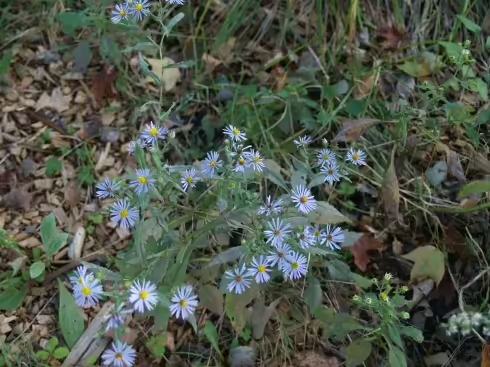Table of Contents for Pearl Crescent (Phycoides tharos) Butterfly
Introduction to the Pearl Crescent
The Pearl Crescent is found in most of North America, except for the Pacific Northwest and the martime provinces of Canada. It is a member of the family Nymphalidae and is in the subfamily Nymphalinae. This butterfly was first named and described by Dru Drury, a British entomologist in Illustrations in Natural History in 1773. This brown and yellow butterfly utilizes plants from the Aster Family (Asteraceae) as hosts.
Taxonomy and Naming of the Pearl Crescent

Taxonomy
This butterfly was first named and described byDry Drury, a British entomologist in Illustrations of Natural History (1773). The specimen described was from Van Courtlandt Park in New York City, NY (Butterflies of America). This butterfly is a member of the family Nymphalidae and is in the subfamily Nymphalinae. This is commonly called the brush-foot butterflies.
Meaning of the Scientific and Common Names
Scientific Name
The genus name, Phyciodes, means “crescents” in Latin (Encyclo.co.uk). The species name, tharos, is unknown, but most dictionaries refer to this butterfly in defining it.
Common Name
The common name refers to a crescent shaped spot on the hindwings.
Physical Description

Description
- Color: The Pearl Crescent is a brown butterfly with distinctive orange to yellow markings on both the forewings and hindwings. There can be a color difference in the broods with the summer broods showing less mottling (Bousemann and Sternburg 2001). The males can look more yellow and the females are more brown mottled. The margins of the wings has white crescents on them hence the name.
- Wingspan: 1 to 1.6 inches
- Active Flying Time: This butterfly flies from June to August in the far north and April to November in most places. In the deep south and Mexico it may fly year-round. Often there are several broods.
Lifecycle of this Butterfly

Eggs
The green eggs of this butterfly are laid in clusters underneath aster leaves.
Larvae
The larvae, or caterpillars, are brown, black to white with yellow on the sides, bristly. They look like a bird dropping for protection. The larvae overwinter underneath leaves.
Chrysalis
The chrysalis is gray to yellow-brown and hangs from the host plant.
Adult
The adults are the characteristic brown and orange with the white crescent on the outer edge of the wing.
Range of the Pearl Crescent in the United States and Canada

Pearl Crescents are located throughout North America except for the Pacific northwest, the maritime provinces, and the far northern reaches. This species extends into Mexico as well.
Habitat

This butterfly is not particular when it comes to habitat. It likes open areas such as roadsides, gardens, parks, prairies, pastures, and forested areas.
Host Plants

The larvae, or caterpillars, of this butterfly feed mainly on plants of the Aster Family (Asteraceae). These include the purple stem aster (Symphyotrichum puniceum), white panicle aster (S. lanceolatum), Drummond’s aster (S. drummondii), New England aster (S. novae-angliae) (Bousemann and Sternburg 2001), and many others.
Nectar Plants

This butterfly nectars on plants that are located near the host plants such as milkweeds (Asclepias sp.), goldenrod (Solidago spp.), asters (Symphyotrichum spp.), and others. They can also be found around puddles, where they muddle.
Frequently Asked Questions about the Pearl Crescent (Phyciodes tharos)
What other butterflies are similar to this one?
The Texan Crescent can look like this butterfly, but is darker and almost black. The Tawny Crescent appears like the Pearl Crescent but is more yellow on the underside (Bousemann and Sternburg 2001), plus the Tawny Crescent lacks the purplish-brown patch on the hindwing (Pyle 1981). The northern crescent is also similar, but it has a dark patch in the middle of the hindwing margin (Wisconsin Butterfiles). A number of researchers have thought that there are two forms or species of Pearl Crescent (Catling 1997 and Porter and Mueller 1998). So far, it is still considered one species.
Where can I get more information about this butterfly?
Are there any interesting facts about the Pearl Crescent?
This is one of the most common “meadow” butterflies (Pyle 1981) and most widespread (Wisconsin Butterflies).
References
- Bouseman, John K. and James G. Sternburg. 2001. Field Guide to the Butterflies of Illinois. Champaign: Illinois Natural History Survey. Manual 10.
- Catling, Paul M. 1997. Biology of the black-antenna race of Phyciodes tharos tharos (Nymphalidae) in Ontario. Journal of the Lepidopterists Society 51: 218-226.
- Porter, Adam H. and Joseph C. Mueller. 1998. Partial genetic isolation between Phyciodes tharos and P. cocyta (Nymphalidae). Journal of the Lepidopterists Society 52: 182-205.
- Pyle, Robert Michael. 1981. National Audubon Society Field Guide to Butterflies. New York: Chanticleer Press.


